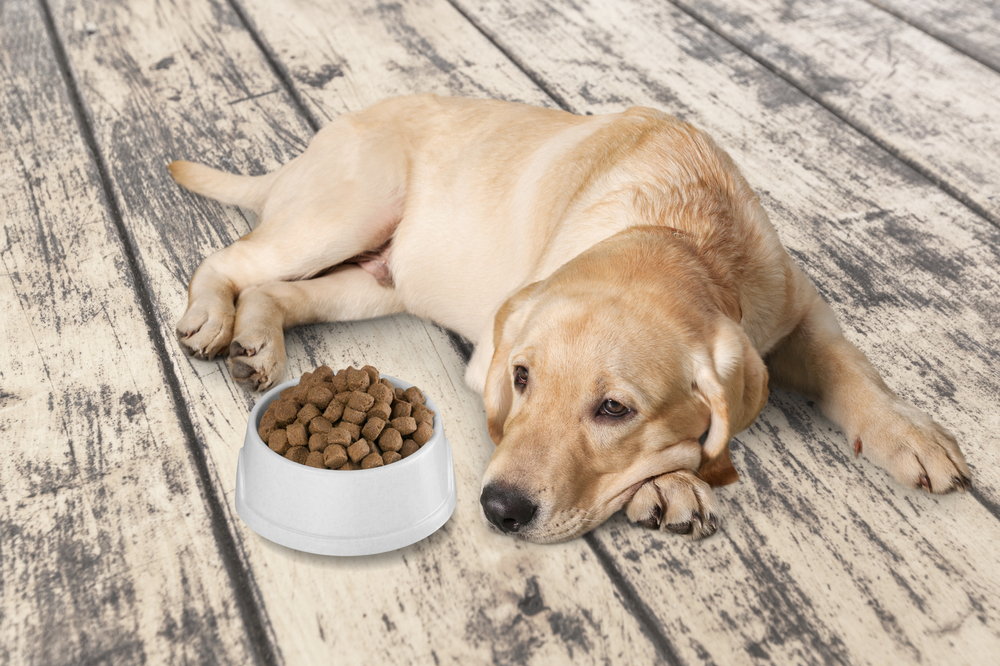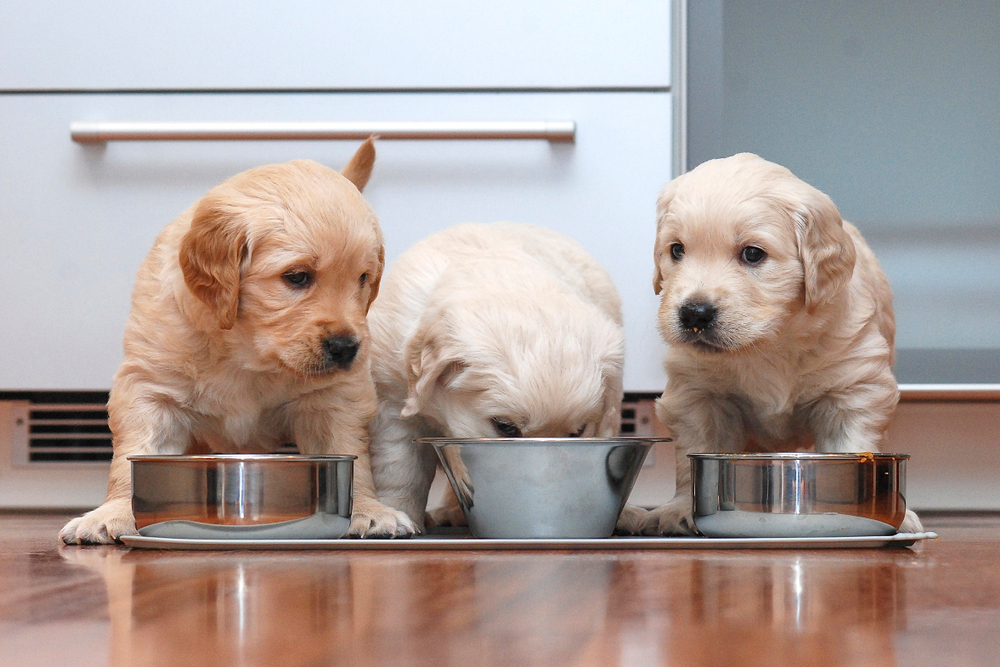Each year, dog owners buy more than $769 million worth of dry food for their favorite four-legged friends. Dry kibble has its benefits. Besides the fact that it costs less than canned dog food and doesn’t need refrigeration, experts say it helps keep your dog’s mouth healthy by reducing plaque and tartar buildup.
But what happens when your canine companion isn’t tolerating his regular dry-dog-food diet? What happens when your pet simply couldn't consume the balanced and nutritious dog meals you've spent so much time and energy trying to get right? Sometimes he just needs a softer version. Here are our best tips and tricks for softening your dog’s hard kibble without turning it to mush.

Rule out health problems first
Since dogs can’t tell us what’s really going on inside, it’s best to consult your veterinarian before you add any ingredients or change your dog’s diet.
Your dog may not be eating that fresh and perfectly stored dry dog food for a variety of reasons. Here are a few you should look into:
- He's a picky eater. Or simply bored with the taste of his current kibble. If he happily gobbles up snacks and treats between meals but turns his nose up at the kibble in his bowl, the signs point to picky — or spoiled.
- You're overfeeding him. This is a common problem among dog owners and an easy one to fix. Talk to your veterinarian about the recommended amount of dog food for the size, age, and activity level of your pet and adjust accordingly.
- He isn’t feeling well. He may be dehydrated or have an upset stomach relating to an environmental issue like allergies or a more serious illness such as parvo or parasites.
- His teeth hurt. Older dogs in particular develop dental problems, such as cracked or missing teeth. That makes chewing dry dog food difficult. Left untreated, dental problems can lead to infections. The bacteria from these infections can travel to the heart, kidneys, liver, and other systems, so it’s important to address them sooner rather than later.

Tips and tricks for softening hard kibble
Once your veterinarian rules out any underlying health conditions, try some of these tricks to soften and nutritionally enhance your dog’s hard food.
Step 1: Start with water
Water is a key ingredient in canned dog food and essential to the health of your dog. Unlike humans, dogs don’t sweat. They pant to cool themselves — a whole-body experience that results in significant water loss. For that reason, adding water to your dog’s diet does more than just soften his food.
- It increases their water intake, especially for those dogs who don’t seem to drink a lot of water during the course of the day.
- Water helps prevent other health problems, such as dehydration and urinary tract infections caused by lack of water intake.
- It improves digestion. Water helps break down the food and aids in releasing the enzymes and acid needed for the digestion process.
- Water slows down the speed at which dogs eat their food, which helps avoid stomach problems such as bloat.
- It heightens the aroma of their food, which stimulates appetite.
How much water should you add? That depends upon how much your pet eats and the texture your dog prefers. Start with enough water to moisten the food and continue to add in small increments until your pet seems to be eating heartily and comfortably.
Step 2: Add some bone broth
In addition to softening dry kibble, stock adds healthful ingredients such as collagen, hyaluronic acid, chondroitin glucosamine, and amino acids to your dog’s diet. These can be helpful in treating conditions such as arthritis and leaky gut syndrome.
As with water, start with adding just enough to moisten the food. Increase the amount until you reach the consistency your dog prefers.
Step 3: Give yogurt a try
Not only will yogurt make hard food easier to eat, but it is also a great source of minerals, antioxidants, vitamins, and protein. Plain Greek yogurt with live cultures is the best option because it contains lower levels of lactose and no natural or artificial sweeteners, which are detrimental to your dog’s good health.
Some dogs may have trouble digesting the lactose in yogurt, so begin with a small amount. If you see any signs of lactose intolerance, such as gas, diarrhea, or vomiting, stop adding this ingredient and try something else.
Step 4: Test out fish oil
This anti-inflammatory additive can be combined with water in your dog’s dry food. This supplement contains high amounts of omega-3 fatty acids, which can be beneficial for dogs with heart problems, joint and cognitive issues, and coat or skin conditions.
How much fish oil should you add to your dog’s food? That depends on the size of your dog and his dietary requirements. Be sure to check with your vet for the proper dosage.
Step 5: Supplement with canned dog food
Mixing canned food with dry kibble is one of the easiest ways to soften your dog’s food. Canned food is higher in water content and lower in nutritional value, which is important to keep in mind when choosing this option. While the aroma, taste, and consistency will be enticing to your dog, you’ll want to make sure the ratio of canned to dry food is healthy for the size, weight, and age of your dog.
Every dog’s nutritional needs are different, so it’s best to consult your veterinarian before you make any changes to your dog’s diet. Once you determine which softening method to use, be sure to monitor your dog’s food bowl as moist food spoils quickly. Armed with the right advice and a bit of TLC, you can provide the furry members of your family with nutritional meals they enjoy eating.
Editors' Recommendations
- 5 surefire ways to keep your dog off your bed and get a good night’s sleep
- Are ‘dog years’ really 7 human years? How to calculate your dog’s age
- Taking your dog’s collar off at night: Safe move or safety risk?
- Looking for signs your dog has ticks? These telltale symptoms mean you have a flea or tick problem
- Video: This family dog is the world’s best babysitter



